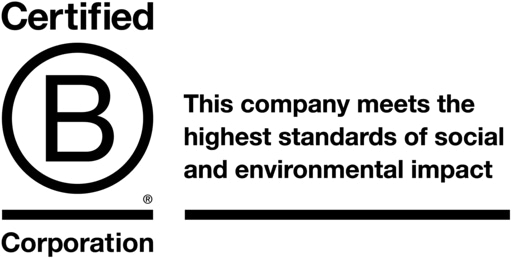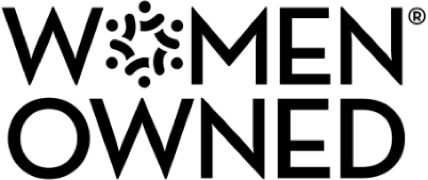How To Be A Carbon-Neutral Business
Although carbon dioxide (CO2) isn’t the only greenhouse gas (greenhouse gas = gases in the atmosphere that trap heat, causing a “greenhouse” heating effect), it is the greenhouse gas with the highest level of emissions in the atmosphere. According to www.climate.gov, humans are putting an estimated 9.5 billion metric tons of carbon into the atmosphere each year. Because human existence is causing such a massive and increasing negative impact on the planet, iBec believes that we should be responsible for counteracting the damage that we’re causing.
For businesses, being carbon-neutral means offsetting all of the greenhouse gasses that are produced as a byproduct of the business. Some businesses utilize more fossil fuels than others, and there are some lesser-known sources (like cement production in the construction industry) that are responsible for emitting carbon. As a B Corp Certified company, iBec Creative is required to calculate and document all sources of greenhouse gasses that result as a part of our operation. For our company, this means heating, lighting, and internet for the office, as well as the commutes of all our employees.

Our 2022 Emissions Calculation
To calculate our annual carbon footprint iBec documents the energy used by each greenhouse-gas-emitting resource and then calculates the CO2 equivalent produced. We also document the amount of energy acquired from renewable resources and track that number by percentage. The following is a breakdown of our total 2022 emissions and how we calculate each company resource that produces those emissions:
Employee commute
An annual survey is completed by each iBec Creative employee asking questions such as “What is your commute to the office in miles?” and “How many times did you commute to the office in the past year?” paired with “What is the MPG of the car used to commute?” We also consider iBec culture events (happy hours, etc) as an area that iBec as a company is responsible for offsetting.

Natural gas
Because natural gas usage is tracked via meter by the heating company, this is an easy number to obtain. We only need to convert therms used to the amount of CO2 produced.

Electricity
The iBec Creative office is powered using a clean source: wind power! Therefore, no carbon emissions were produced in 2022

Server electricity
A more complicated process, determining the electricity consumed by a computer requires a hefty amount of research. Since we utilize virtual private servers (VPSes) that do not share their host machine with other tenants, the electricity required by the VPS is roughly the same as the wattage required by its host. In our case, the host machine for each VPS draws roughly 600W of power. From there, it’s not hard to get to the amount of carbon released: divide wattage by 1000 to get kilowatts, multiply by 24 and then 365 to get annual kilowatt hours, divide by 1000 to get annual megawatt hours, multiply by pounds of carbon released per megawatt hour according to eia.gov (it helps to know the state in which the server resides), and divide by 2204.6 to get the amount of carbon burned per year in metric tons (mT).

iBec Creative’s 2022 total carbon emissions:

How We Offset Our Carbon Footprint
Most businesses do not have the opportunity to use 100% renewable energy sources, so to achieve carbon neutrality they must offset their carbon footprint. The term “offset” in this sense means extracting from the atmosphere the same amount of CO2e that was put into the atmosphere by the company. All carbon offsets are measured in CO2e, carbon dioxide equivalent, which is a standard unit to measure all greenhouse gasses based on their relative global warming potential compared to carbon dioxide.
Carbon offsets can be purchased by the metric ton, and the money from the sale of offsets goes towards extracting greenhouse gasses from the atmosphere. For our carbon offsets, iBec relies on Terrapass. Each year we go onto Terrapass to enter the total metric tons of carbon we need to offset, and from our purchase, they contribute the appropriate amount of work to their ongoing projects. Terrapass works in the following categories: Forestry, BEF WRCs®, Renewable Energy, Abandoned Coal Mine Methane Capture, Landfill Gas Capture, and Farm Power.
The price per mT in 2022 was $16.99 which meant that our total cost to offset carbon production from the year was $509.70.

Terrapass will work with businesses and individuals alike. Even if you don’t own a business, you can contribute to offset your own, or your family’s, personal carbon production. Head to their website here to learn more about the program and how you can do your part.
How 2022 Compares to Years Past
It’s no question that the COVID emergency was a traumatic and devastating experience for people around the world. However, if there is one good thing that came out of the pandemic years, it was a drop in carbon emissions due to a decrease in travel. With the emergence of COVID-19, iBec was forced to close our office doors much like everyone else. With everyone hunkering down at home, gasoline spent commuting to work whittled down to near zero. Since the office didn’t shut down until part way through 2020, however, we still see some carbon emissions from commuting and natural gas.

While our carbon emissions did increase drastically from 2020 to 2021, so did our in-person time with clients and coworkers. Considering the times that we are emerging from, our increased carbon emissions over the past three years signify the end of a struggle that felt as though it would never come. Yet, here we are. And because we offset our carbon emissions, those in-person moments feel a little more guilt-free.
It’s Good to Be a B Corp
There are many positive things that come along with being a Certified B Corporation, other than offsetting carbon emissions. iBec has taken on the vow of social and environmental performance, accountability, and transparency that is required to qualify for B Lab’s stamp of approval. While treating the environment with appreciation and kindness comes along with that, it’s also about ensuring that we support our community, provide a living wage to all of our employees, and promote a healthy work-life balance.
Becoming carbon-neutral can be a stepping stone to achieving your B Corp Certification, but if you simply care about reducing or neutralizing your carbon footprint, we recommend getting started with Terrapass. To start the process of becoming carbon neutral, it’s only a matter of calculating your carbon output. From there, you’ll be on your way to being carbon-neutral in no time!
Interested in receiving monthly iBec Creative updates right in your inbox?
Sign up below and we’ll send you updates once a month. Our newsletters are known to contain: exclusive pictures of the iBec crew having fun, TikTok trends to get your creativity flowing, information on B Corp Certification, and so much more! There’s no limit to what you’ll find in an iBec newsletter.



